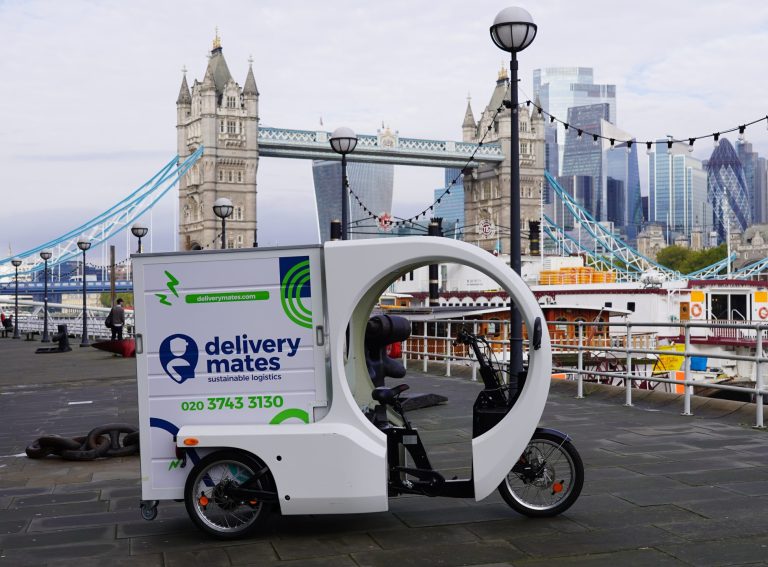Urban Sharing’s Chief Revenue Officer Tom Nutley believes that the current micromobility tendering process is broken.
He has argued that “rigid KPIs and revenue grabs” from local authorities are harming the industry and failing to serve communities. But what needs to change?
“I’ve worked with more than 30 shared operators over the past eight years, so I understand what good looks like,” Nutley tells Zag Daily.
“I am not trying to prescribe every point of the tender process, but I want to push it in the right direction. If we can find common ground then we can move this industry forward.”
Docked vs dockless
Docked and dockless micromobility systems ultimately serve the same purpose in helping to switch people from single occupancy, polluting vehicles to a more sustainable mode of transport. However, the tendering process differs greatly, with docked operators earning tenders of up to 15 years, while historically dockless e-scooter or bike providers have received contracts of around a year.
“One year is not long enough,” Nutley explains.
“In Europe we have seen tenders of three to five years for dockless schemes which makes perfect sense as they provide assurances that as long as the operator hits their deliverables, they will remain for a set period of time.”
Meanwhile, Nutley has found that tenders which run for 10+ years lead to complacency.
“If an operator is given such a long tender, they will often resort to meeting the minimum requirements and reduce levels of innovation and a drive to improve the service,” he says.
The length of the tenders handed out are often related to the infrastructure in place, with several cities now having docking stations that are fixed into the ground with concrete.
But this is incongruent with the fact that several providers are moving to surface mounted docks which enables greater levels of flexibility and less need for 10 to 15 year tenders.
Nutley continues: “I think that five years is the sweet spot. We are already seeing innovation slowing down in scooter development and I believe that tenders of this length provide a nice balance between ensuring financial stability and encouraging investment into new and improved technology.”
One or multiple vendors?
In designing the ideal tender, plenty of debate still exists over the benefits of a municipality opting for one or multiple vendors to operate their shared micromobility platforms.
Nutley believes that one operator models work best, but this is conditional on several factors.
“Cities need to provide their micromobility provider with the operational and financial support required, as well as a tender of appropriate length, if they expect them to succeed,” he explains.
“You cannot expect an operator to put out thousands of vehicles for a short amount of time in the vast majority of cities, excluding perhaps London or Paris. If a single operator model is to work, the municipality needs to ensure the scheme can be economically viable whether that be thanks to central funding, ride revenue or sponsorship.”
Nutley argues that for a multi-operator system to work, riders need to be able to rent vehicles from different providers through a single application.
“These operators don’t want vehicles operated by their rivals to be hired through a shared application,” he notes.
“Meanwhile, market consolidation is already naturally driving the industry toward single operator models, because ultimately these multi-operator systems cannot work when the reliability and availability isn’t guaranteed citywide, which negatively impacts usage.”
Financing shared micromobility
Profitability is one of the biggest questions facing the sector, with a mass switch towards sustainable modes of transport only made possible if operators can remain solvent.
Nutley believes that when a scheme is integrated within a city’s public transport network, it should be funded by public money based on a sliding scale. How this scale is balanced should largely be determined by the particulars of each situation.
“The amount of money the city invests should be reflected in whether they receive a cut of revenues generated by rides or sponsorships,” Nutley says.
“Cities cannot expect to benefit from these schemes for free but then also take a cut of the revenues. Whereas, if they want to help fund these schemes, they need to do so in a way that ensures the provider can survive financially.”
There is also the question of fixed fees, which Nutley explains need to be based on due diligence which looks at an operator’s ability to deliver against that fee.
“The tender needs to be incentivised based on what the local authority wants to offer within its city,” he adds.
“Fixed fees, much like longer tenders, reduce innovation and cause a race to the bottom.”
Fleet make up
Several cities have instituted a cap on fleet sizes, which helps with budgeting on the part of the local authority and the operator. But this creates a scarcity of vehicles and leads to the scheme failing to serve the whole city.
“Lack of supply will mean that only city centres are served with vehicles, while suburban areas are not,” explains Nutley.
“Scale helps solve the problem of limited supply in less dense areas, it encourages greater levels of inclusion and it helps with economic viability. Studies have shown that current fleet sizes could be increased to meet demand, operators just need the green light.”
On the topic of the state of the hardware offered by shared operators, Nutley argues that the focus should be on providing usable, safe and reliable vehicles, rather than expensive new technology that perhaps provides a negligible benefit but ramps up the cost of the scheme.
“Operators should be able to run trials with the cutting edge technology, but rolling out bells and whistles will lead to smaller fleets and less profitability.”
Building effective KPIs
As Nutley has argued in the past, the KPIs attached to several tenders have worked against the usability of the service.
“Availability is a broken metric because there is never enough supply to meet demand,” he continues.
“Instead, cities should issue KPIs based on the demand trends in an area rather than a specific location. If they can determine an area is usable by riders, even if one station is empty, that is the most important factor.”
Again, Nutley believes that there needs to be a give and take between the city and operator, with KPIs implemented on a sliding scale based on the nature of the scheme.
“If the city wants to incentivise five to 10 rides per vehicle per day, then other metrics such as downtime need to be made more manageable,” he says.
“Many of the issues discussed come down to a misalignment between the municipalities, the micromobility providers and the customers. There needs to be more focus on ensuring vehicles are available, charged and in the right place, rather than meeting specific metrics that do not serve anyone.”





